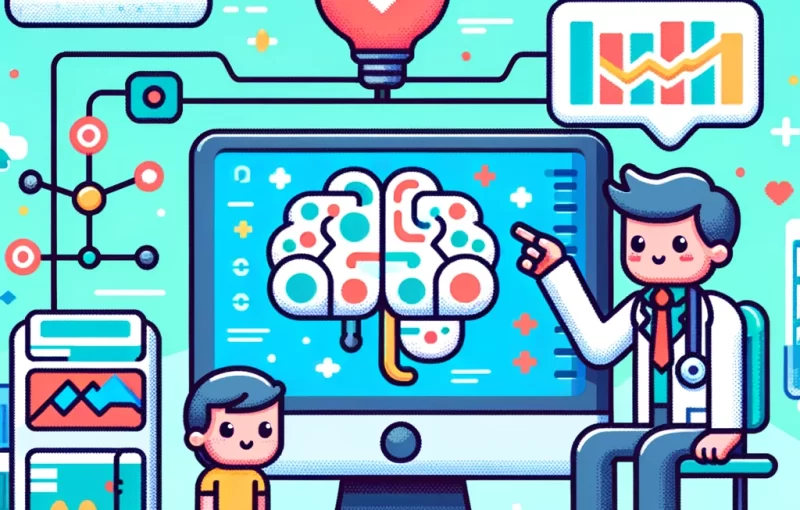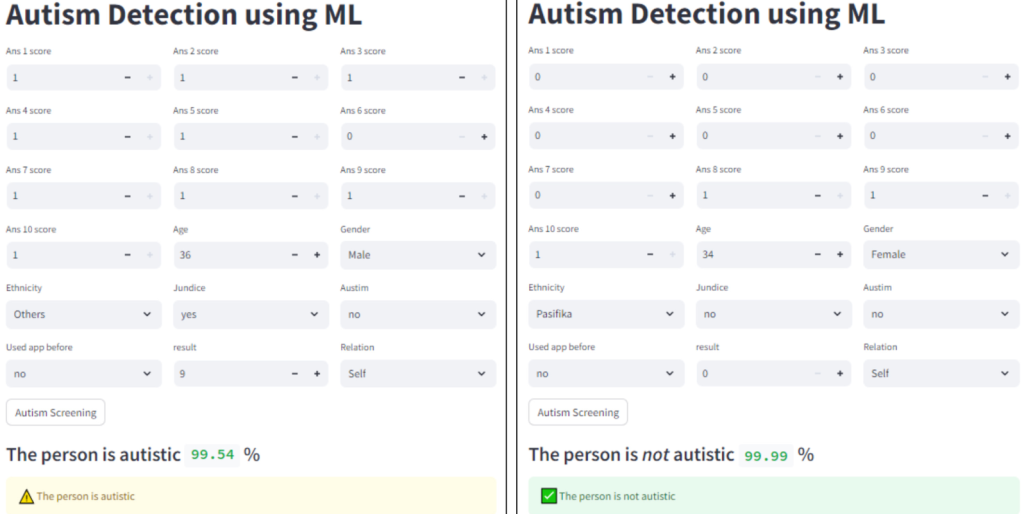
Early Autism Diagnosis via Machine Learning
by Jon Scaccia May 17, 2024Autism Spectrum Disorder (ASD) presents unique challenges and nuances, affecting millions worldwide. It is characterized by a broad range of conditions manifested by challenges with social skills, repetitive behaviors, speech, and nonverbal communication. The diversity of symptoms often makes early diagnosis complex and elusive. However, a new study offers hope by leveraging the power of machine learning to enhance the speed and accuracy of ASD diagnosis, thus potentially transforming countless lives by enabling earlier intervention and treatment.
The Power of Machine Learning in Medical Diagnosis
Machine learning, a branch of artificial intelligence, excels in identifying patterns and making predictions based on large datasets. This capability is particularly crucial in healthcare, where timely and accurate diagnoses can significantly affect patient outcomes. The recent study utilizes machine learning to address the specific challenge of early ASD detection, employing a variety of sophisticated algorithms to parse through extensive data on children and adults potentially affected by ASD.
How Does Machine Learning Help in ASD Diagnosis?
The researchers applied eight different classification models and five clustering methods to ASD datasets. These models can effectively sort through complex data and identify key behavioral and medical markers that might indicate ASD, far quicker than traditional diagnostic methods.
For instance, classification models like Support Vector Machines (SVM) and Logistic Regression (LR) have demonstrated remarkably high accuracies, achieving up to 100% accuracy in identifying ASD traits in children. This precision comes from the models’ ability to learn from data where the diagnosis is already known, allowing them to recognize similar patterns in new patients.
Moreover, the clustering methods explored in the study offer insights into how these models can adapt to scenarios where true labels (definitive diagnoses) are not available. This aspect is crucial for applying machine learning in real-world settings where definitive diagnoses may not yet be available, helping medical professionals to identify likely ASD cases based on symptom clustering alone.
Transforming Data into Solutions
One of the study’s most significant achievements is the creation of a unified dataset that amalgamates individual data points into a holistic dataset. This comprehensive approach allows for a more robust analysis and understanding of ASD across different age groups and demographics, which is critical given the variability in how ASD manifests.
The study also conducted a rigorous hyper-parameter search for each model, ensuring that the machine learning algorithms are finely tuned to offer the best possible outcomes. This optimization process enhances the models’ ability to discern subtle nuances in the data, further improving diagnostic accuracy.
Beyond the Numbers
While machine learning models’ statistical success is impressive, their real-world impact is even more profound. Early diagnosis of ASD can dramatically alter the developmental trajectory of affected individuals. By identifying ASD earlier, interventions can be started sooner, which can significantly improve communication skills, social behaviors, and overall quality of life.
The research also underscores the importance of accessibility in technological advancements. The study’s outcomes are not just academic; they are a stepping stone towards practical, scalable solutions for widespread medical challenges. The researchers have even developed a Graphical User Interface (GUI) for their models, making it easier for clinicians to apply these tools in everyday medical practice.

Looking Ahead
While the results are promising, the journey doesn’t end here. The study’s success lays the groundwork for further research and application of machine learning in medical diagnostics. As the technology evolves, so too will its applications, potentially extending beyond ASD to other neurological conditions.
Conclusion
This study is a beacon of hope for the ASD community, showcasing the potential of machine learning to revolutionize diagnostic processes. As we continue to harness the capabilities of AI and machine learning, the horizon looks promising for all those impacted by ASD.
The potential to change lives through technology has never been greater, and this research is at the forefront of that transformational journey. By turning data into diagnoses and symptoms into solutions, machine learning is paving the way for a future where ASD can be identified and addressed earlier than ever before, offering hope and support to those who need it most.
Lead the Way in Public Health – Get Your Weekly Insight!
Ready to lead the charge in health advocacy and research? ‘This Week in Public Health’ delivers essential weekly updates, keeping you informed and ahead in the dynamic field of public health. With insights on the latest breakthroughs and initiatives, our newsletter is your gateway to being a proactive leader. Subscribe for free and start shaping the future of public health today!
About the Author
Jon Scaccia, with a Ph.D. in clinical-community psychology and a research fellowship at the US Department of Health and Human Services with expertise in public health systems and quality programs. He specializes in implementing innovative, data-informed strategies to enhance community health and development. Jon helped develop the R=MC² readiness model, which aids organizations in effectively navigating change. And no, vaccines don’t cause autism.
Leave a Reply